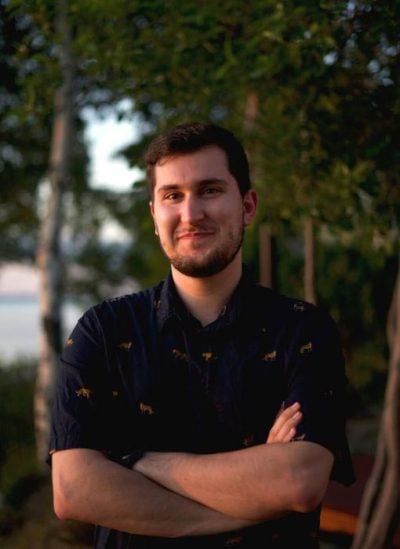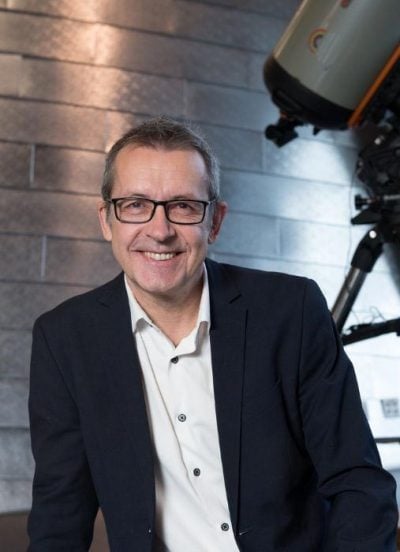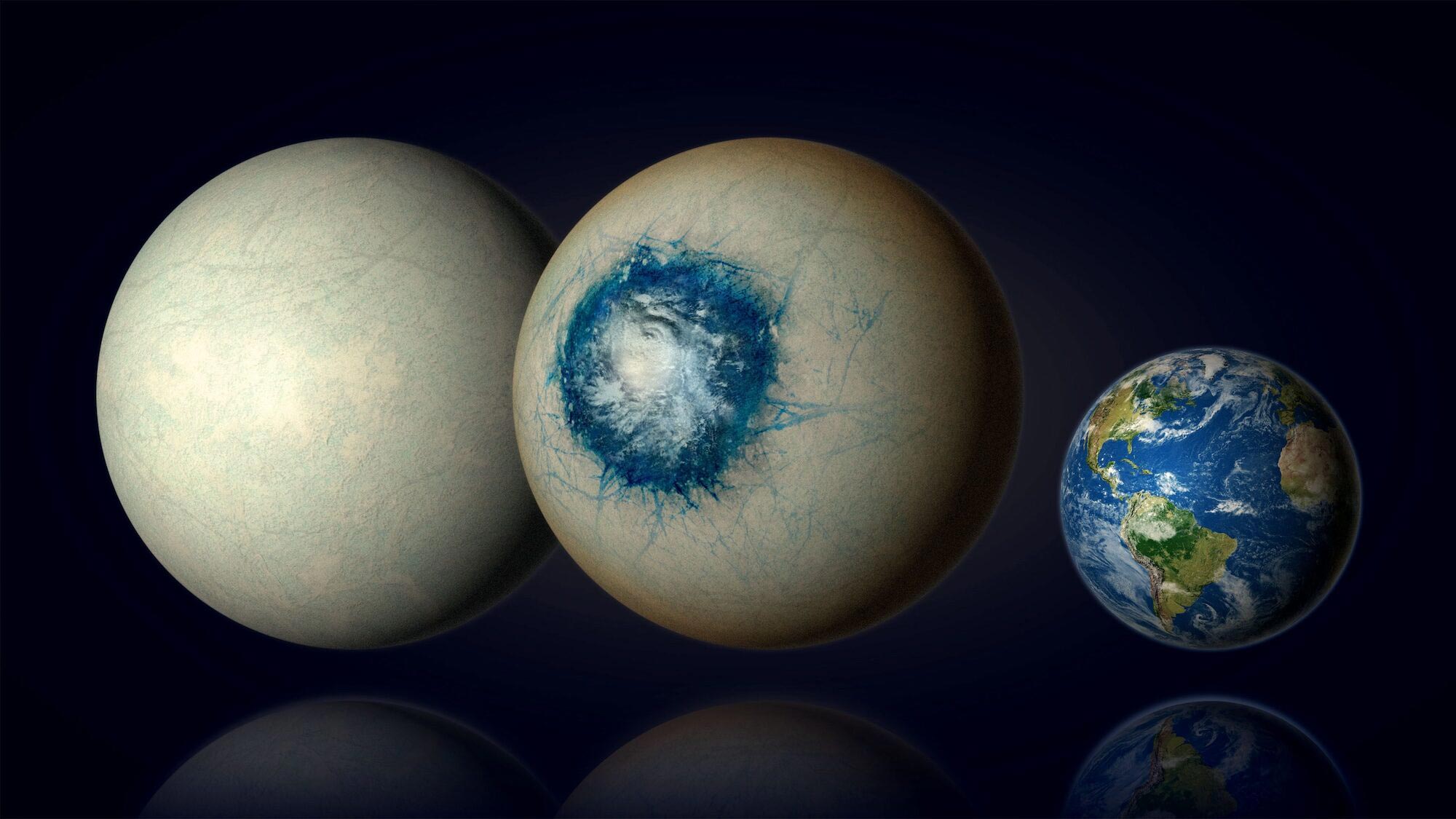Temperate exoplanet LHS 1140 b may be a world completely covered in ice (left) similar to Jupiter’s moon Europa or may be an ice world with a liquid substellar ocean and a cloudy atmosphere (center). LHS 1140 b is 1.7 times the size of our planet Earth (right) and is the most promising habitable zone exoplanet yet found in the search for liquid water beyond the Solar System. Credit: Benoit Gougeon, Université de Montréal
A team of astronomers has made an exciting discovery about the temperate 
As the most advanced space telescope to date, the James Webb Space Telescope excels in the study of exoplanets. Its cutting-edge technology allows astronomers to probe the atmospheres of distant worlds, analyzing their makeup and assessing their potential to support life. Credit: Northrup Grumman
An Exoplanet in the ‘Goldilocks’ Zone’
LHS 1140 b, an exoplanet orbiting a low-mass red dwarf star roughly one-fifth the size of the Sun, has captivated scientists due to it being one of the closest exoplanets to our Solar System that lies within its star’s habitable zone. Exoplanets found in this “Goldilocks’ Zone” have temperatures that would allow water to exist on them in liquid form — liquid water being a crucial element for life as we know it on Earth.
Earlier this year, researchers led by Charles Cadieux, a Ph.D. student at UdeM’s Trottier Institute for Research on Exoplanets (iREx) supervised by professor René Doyon, reported new mass and radius estimates for LHS 1140 b with exceptional 
Charles Cadieux, Ph.D. student at the Trottier Institute for Research on Exoplanets and the Université de Montréal, is the paper’s lead author. Credit: Courtesy
One of the critical questions about LHS 1140 b was whether it is a mini-Neptune type exoplanet (a small gas giant with a thick hydrogen-rich atmosphere) or a super-Earth (a rocky planet larger than Earth). This latter scenario included the possibility of a so-called “Hycean world” with a global liquid ocean enveloped by a hydrogen-rich atmosphere which would exhibit a distinct atmospheric signal that could be observed using the powerful Webb Telescope.
New Insights From Webb Data
Through an extremely competitive process, the team of astronomers obtained valuable “director’s discretionary time” (DDT) on Webb last December, during which two transits of LHS 1140 b were observed with the Canadian-built NIRISS (Near-Infrared Imager and Slitless Spectrograph) instrument. This DDT program is only the second dedicated to the study of exoplanets in the nearly two years of Webb’s operations, underscoring the importance and potential impact of these findings.
Analysis of these observations strongly excluded the mini-Neptune scenario, with tantalizing evidence suggesting exoplanet LHS 1140 b is a super-Earth that may even have a nitrogen-rich atmosphere. If this result is confirmed, LHS 1140 b would be the first temperate planet to show evidence of a secondary atmosphere, formed after the planet’s initial formation.
Estimates based on all accumulated data reveal that LHS 1140 b is less dense than expected for a rocky planet with an Earth-like composition, suggesting that 10 to 20 percent of its mass may be composed of water. This discovery points to LHS 1140 b being a compelling water world, likely resembling a snowball or ice planet with a potential liquid ocean at the sub-stellar point, the area of the planet’s surface that would always be facing the system’s host star due to the planet’s expected synchronous rotation (much like the Earth’s Moon).

René Doyon. Credit: Amélie Philibert, Université de Montréal
“Of all currently known temperate exoplanets, LHS 1140 b could well be our best bet to one day indirectly confirm liquid water on the surface of an alien world beyond our Solar System,” said Cadieux, lead author of the new study. “This would be a major milestone in the search for potentially habitable exoplanets.”
Possible Presence of an Atmosphere and an Ocean
While it is still only a tentative result, the presence of a nitrogen-rich atmosphere on LHS 1140 b would suggest the planet has retained a substantial atmosphere, creating conditions that might support liquid water. This discovery favors the water-world/snowball scenario as the most plausible.
Current models indicate that if LHS 1140 b has an Earth-like atmosphere, it would be a snowball planet with a vast “bull’s-eye” ocean measuring about 4,000 kilometers in diameter, equivalent to half the surface area of the Atlantic Ocean. The surface temperature at the center of this alien ocean could even be a comfortable 20 degrees arXiv:2406.15136
Cadieux is a doctoral student at Université de Montréal’s Trottier Institute for Research on Exoplanets (iREx).
Other iREx researchers who contributed to this paper are René Doyon (UdeM), Étienne Artigau (UdeM), Olivia Lim (UdeM), Michael Radica (UdeM), Salma Salhi (UdeM), Lisa Dang (UdeM), Loïc Albert (UdeM), Louis-Philippe Coulombe (UdeM), Nicolas Cowan (McGill), David Lafrenière (UdeM), Alexandrine L’Heureux (UdeM), Caroline Piaulet-Ghorayeb (UdeM), Björn Benneke (UdeM), Neil Cook (UdeM), and Marylou Fournier-Tondreau (UdeM and













/https://tf-cmsv2-smithsonianmag-media.s3.amazonaws.com/filer_public/d1/82/d18228f6-d319-4525-bb18-78b829f0791f/mammalevolution_web.jpg)






Discussion about this post